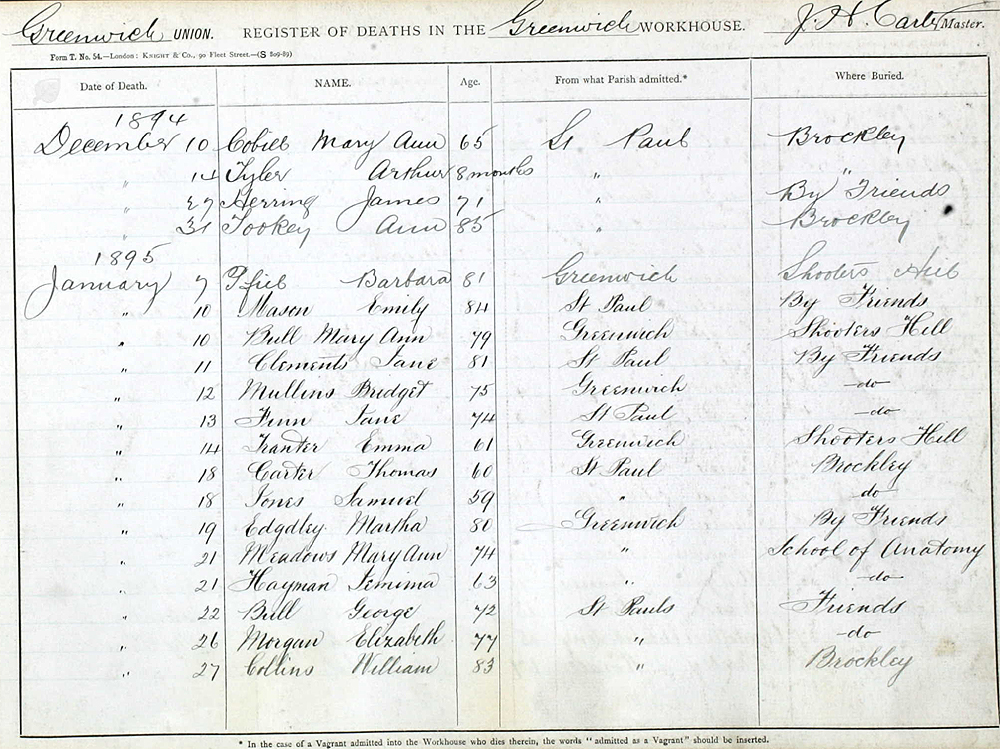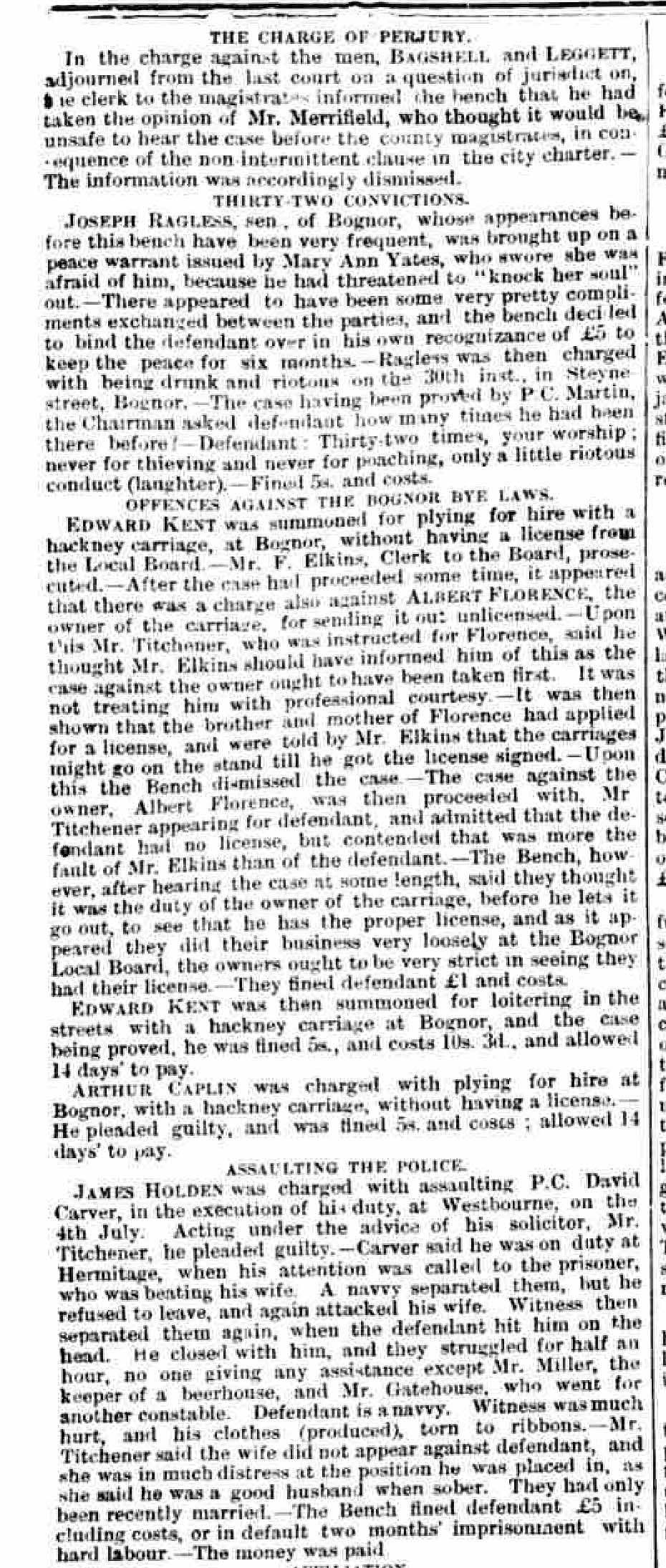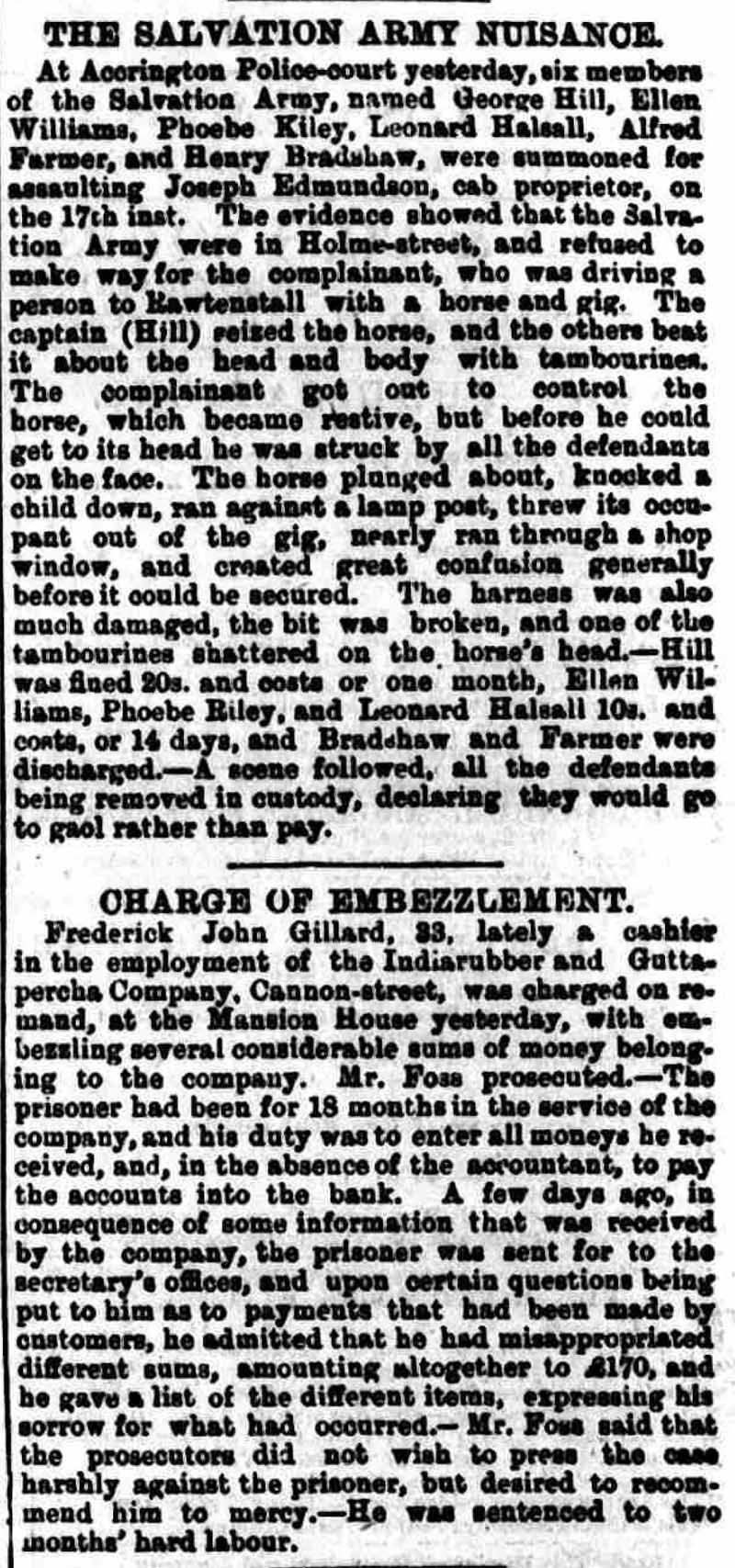My three times great grandmother really did not have much of an existence although she survived into her sixties. She spent all her life, like so many Victorian women at the bottom of the social and economic scale, cleaning other people’s houses and clothes. In death her body was used to further the knowledge of medical science. 118 years after her demise although invisible in life she is at least afforded a little mention here in the 21st century.

Jemima Arscott was born in Chatham in about 1833. She was my 3x great grandmother and spent most of her life as a cleaner or a laundress. She married twice, first in 1856 to my three times great grandfather, Edwin Winterbank, a coachman from Greenwich who died in 1861. From this first marriage they had three children, one of whom married Walter Frederick Cave my two times great grandfather. Then in 1861 Jemima married Alfred Hayman, a labourer from Maidstone. By 1891 it appears that Alfred had deserted his poor wife and had left her still working as a laundress in Greenwich Workhouse where she stayed until her death on the 21st of January, 1895. By this time her husband was also in another workhouse in Malling in Kent. He did not go to attend to his deceased wife and left her body in the hands of the Greenwich School of Anatomy. Because under the terms of the 1832 Anatomy Act, bodies that were unclaimed for 48 hours could be disposed of by “donating” them for use in medical research and training. This applied not only to workhouses but also any institution whose inmates had died whilst in their care. As a result of this, much to my horror and deep sadness, I discover that Jemima was buried following the school’s use of her body. See: A Pauper Dead-House: The Expansion of the Cambridge Anatomical Teaching School under the late-Victorian Poor Law, 1870–1914




